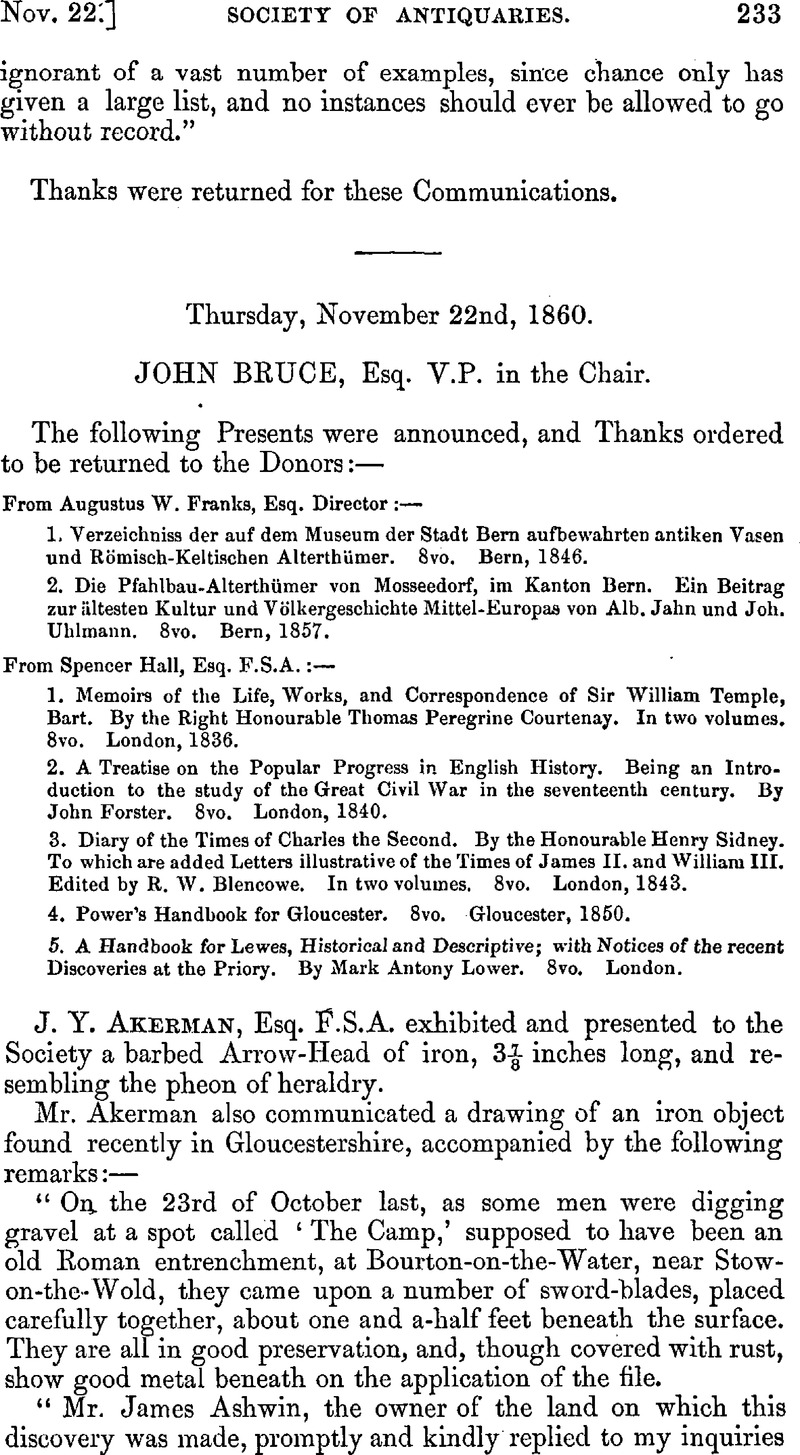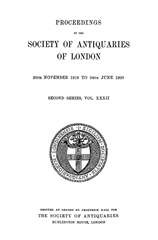No CrossRef data available.
Article contents
Thursday, November 22nd, 1860
Published online by Cambridge University Press: 10 May 2010
Abstract

- Type
- Proceedings
- Information
- Copyright
- Copyright © The Society of Antiquaries of London 1861
References
page 234 note * Proceedings, vol. iv. p. 188.
page 235 note * A notice of this bowl may be found in the catalogue of the museum formed at Gloucester during the meeting of the Archæologieal Institute, pp. 13, 14.
page 237 note * This specimen, which is in the collection of Edmund Waterton, esq. P.S.A. is engraved in the Gentleman's Magazine, to illustrate the report of this meeting.
page 239 note * Third Edition, vol. v. p. 737.
page 239 note † Leake, MS. Coll. Arm. No. 40, p. 492.
page 240 note * Garter Plate.
page 240 note † Leake, ut supra.
page 240 note ‡ Funeral certificates, I. 31, 145, Coll. Arm.
page 241 note * Original in the Principal Registry of the Court of Probate.
page 241 note † This was probably Major-General Count de Marton, who obtained a warrant from William III. for the title of Earl of Lifford, but no patent was passed; he was, however, called Earl of Lifford during his life.
page 241 note ‡ Since the above was read a communication on the subject of this weight has appeared in the “Revue Archeologique,” Jan. 1861, p. 12, written by M. Chabas.
page 242 note * Mr. Harris's papyrus is divided into 116 pages, which he numbers A, B, C, &c 2A, 2B, &c. up to 5L.
page 244 note * The basket was no doubt constructed for the purpose of collecting water, which would otherwise have percolated through the beds of gravel, quicksand, and gravel below the latter, in which the pit was formed. But for the wicker framework the water would have passed through the lower bed of gravel, or have been filled up by the quicksand falling into the pit. The contrivance is considered by Mr. Goddard, an architect of long practical experience, to be worthy of adoption under similar circumstances in the-present time.
page 248 note * For an account of the Urns found at Stade, see a Memoir by the late Mr. Kemble, Archæologia, XXXVI. p. 270.


